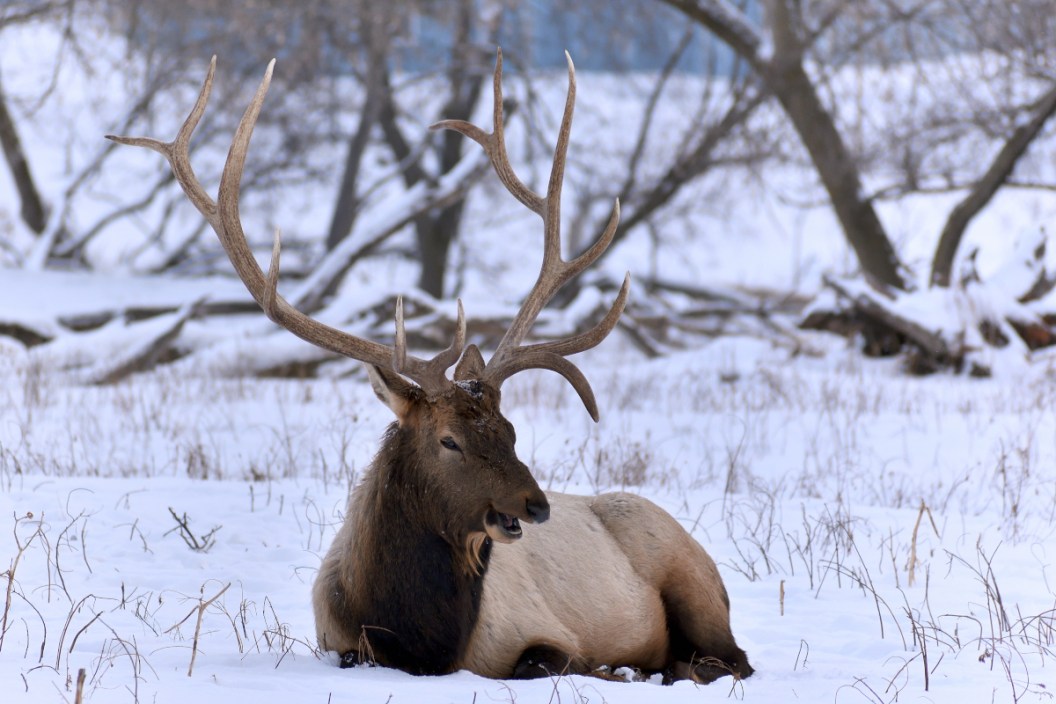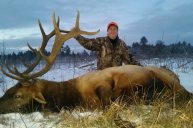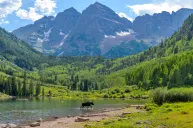No one's mind jumps to Michigan when the topic of premier elk hunting states surfaces. The Great Lakes State's lack of notoriety isn't all that puzzling, either, as the elk herd is as isolated as it is small, exclusive to just one region in the Lower Peninsula. Because of the sheer scarcity that plagues Michigan elk, tags are incredibly hard to come by, as the lottery awards so few hunters a chance to take one of the state's most coveted animals in an effort to preserve a population many hope will grow in the coming years. To make things even more tricky, the hunt is reserved for only residents.
However, this bodes well for those of us who live here in the state, as not only is a Northern Michigan elk hunt one of the rarest opportunities east of the Mississippi River, but it's also one of the cheapest ways to harvest one of North America's most prized game animals.
Today we'll dive into everything there is to know about the hunt itself, covering things like licensing and strategies that should yield the best odds of success. And, believe it or not, there are some truly giant bulls to be found in this neck of the woods if you have the right information before taking off.
A brief history of Michigan elk
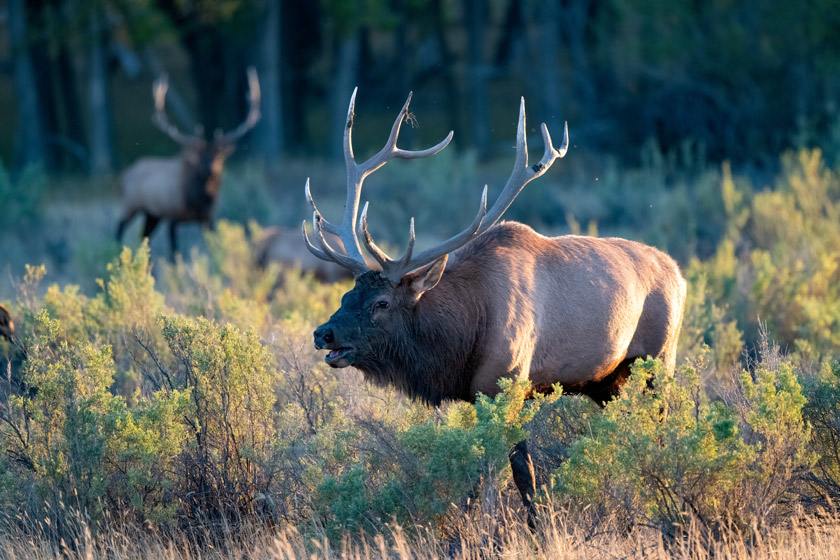
Getty: John Morrison
Many people, hunters included, don't even realize elk call Michigan home. Although this elk herd has an estimated population of just under 1,000, the herd itself is reportedly thriving. These majestic animals once ranged throughout the entire state before they fell victim to overhunting, which ultimately wiped them out sometime in the late 1800s. Swift conservation efforts helped revive the population in 1918, however, as seven elk were reintroduced to Wolverine, Michigan. Rapid success followed the reintroduction, as there were roughly 1,000 roaming Northern Michigan my the mid-1960s.
It wasn't long before the Michigan Department of Natural Resources instituted a hunting season to manage the herd, in 1964 and 1965, which sadly led to an increase in poaching that caused a sharp decline to the population, forcing the state's hand to end elk hunting after only two seasons. Ten years later, the state devised a new elk management plan that would have hunts resume in 1984.
Michigan's annual elk hunt has continued every year since, allowing DNR to keep the population anywhere from 500 to 900 animals. However, if you want a shot at participating in this storied tradition, be prepared to jump through a few hoops you haven't seen on the whitetail deer hunting side of things.
What are the odds of getting an elk tag in Michigan?
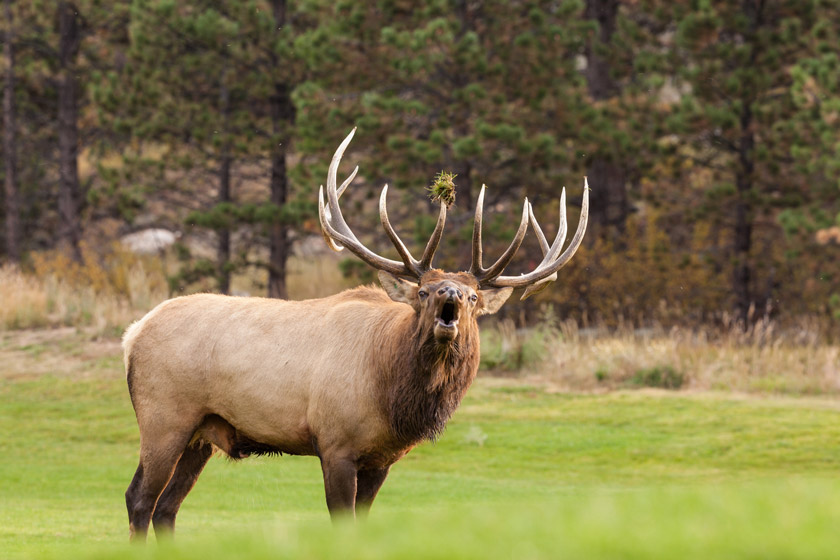
Getty: twildlife
First off, we need to reiterate, the elk hunt in Michigan is open to residents only. With that out of the way, we will not lie. Your odds are not good. Michigan doles out only around 200 elk permits each year to a pool of over 30,000 to 40,000 applicants. Sometimes the number is even less than that. You may wonder: "Why even bother?" Well, an elk tag in Michigan is only $100. Oh, and the success rate in Michigan is around 70 to 80 percent in a typical year. Those are better success rate odds than some western elk havens.
Michigan uses a weighted lottery system to decide who gets an elk tag. Every year you apply for the hunt, you get an additional chance at being drawn. Or as the Michigan DNR's Elk Digest puts it:
"Imagine a chance as a piece of paper with your name written on it that's dropped into a hat with other names. A hand will reach into the hat and draw a name. If you have five chances, then five papers with your name will be added to the hat, increasing your chances of being drawn," the digest states.
Michigan only allows you to apply for one elk chance each year and the cost is $5. The options are to apply for "bull or antlerless" or "bull only." If drawn for bull only you will get an any-elk license valid for an antlered bull or antlerless. If you are drawn for "bull or antlerless," you may be issued either an any-elk license or an antlerless-only license.
Hunters also have the option of purchasing a "chance-only" which allows you to get credit for another year of applying even if you are not ready for an elk hunt just yet. Whatever application you choose, you should expect to have to wait a while before being drawn. Michigan even states on their website that being drawn in your lifetime is not guaranteed. It is not uncommon to hear stories of hunters applying for 15 to 20 years before finally being drawn. While it does happen, do not expect to be drawn the first time you enter.
One other thing we should mention. You should apply every season for chance-only at the very least. Because Michigan completely resets your chances to zero if you do not apply for five consecutive years. It would be a shame to have more than a decade of chances built up and then lose them. The application period is from May 1 to June 1 every year with results available by July 6. Keep in mind, that once you are drawn for an antlerless once, you cannot re-apply for chances or an elk tag for a period of ten years. If you are issued an any-elk license, you cannot apply ever again. Yep, it is a once-in-a-lifetime hunt. Better make it count!
There is another option for prospective elk hunters to win a chance at an elusive license. It involves applying for the "Pure Michigan Hunt." Every year, the DNR selects three winners to receive an elk, bear, antlerless deer, spring and fall turkey licenses, and a chance at a reserved waterfowl hunt. They also give away a prize package. Applications can be made online and are $5 each. There is no limit to the number of times you can apply. The good thing about trying to win this is that it does not affect your chances in the regular elk drawing in any way.
When is Michigan elk season?
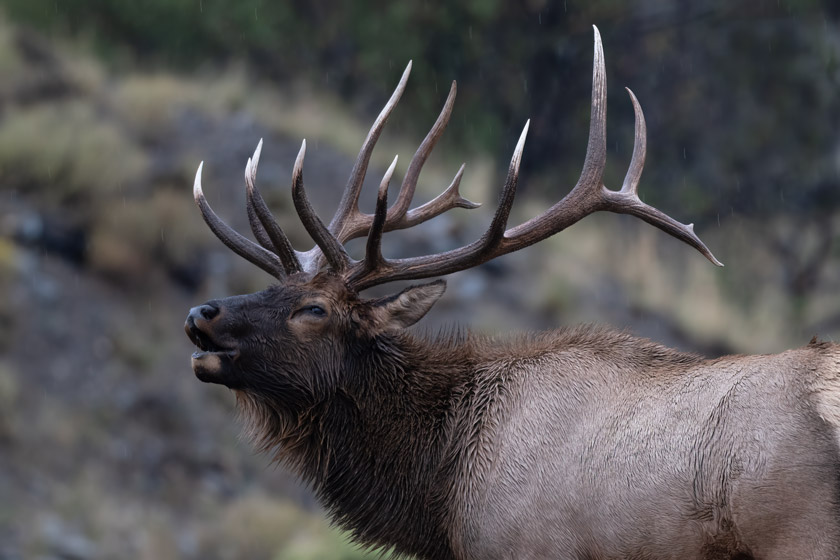
Getty: John Morrison
Once drawn, the Michigan elk hunt works slightly different than the other seasons you may be used to. For one, each hunter is assigned an elk hunt period and elk management unit, neither of which can be changed. So, make sure you have the vacation time ready when your name is drawn. The two periods are as follows:
Hunt Period 1: August 31 - September 3, September 17-20, and October 1-4
Hunt Period 2: December 11-19
The DNR may also decide to hold a hunt period three in mid-January if the traditional season dates failed to meet the DNR's population management goals. The Michigan DNR sends an information packet with the hunt period you have been chosen for when they send your license. They also send maps of the areas that are open to hunting. These maps highlight all the public lands, which are mostly state forests where elk hunting is open. There is one hunt area that is closed for the September and October hunts because it is used as an elk viewing area for tourists.
The Michigan DNR also requires hunters to carefully review the hunting regulations and go through an mandatory online "elk orientation" video on the basics of elk biology, bovine tuberculosis surveillance, and how to register your harvest after the hunt. They take this herd very seriously, as should you. The elk are an extremely limited resource in the state after all.
Michigan's elk hunt areas span parts of Crawford, Oscoda, Alpena, Montmorency, Otsego, Antrim, Charlevoix, Emmet, Cheboygan, and Presque Isle counties. Most of the hunting is done in and around the Gaylord, Atlanta, and Vanderbilt areas, which have prime spots for hunters looking for a bull with big antlers.
Should I hire a guide for my elk hunt?
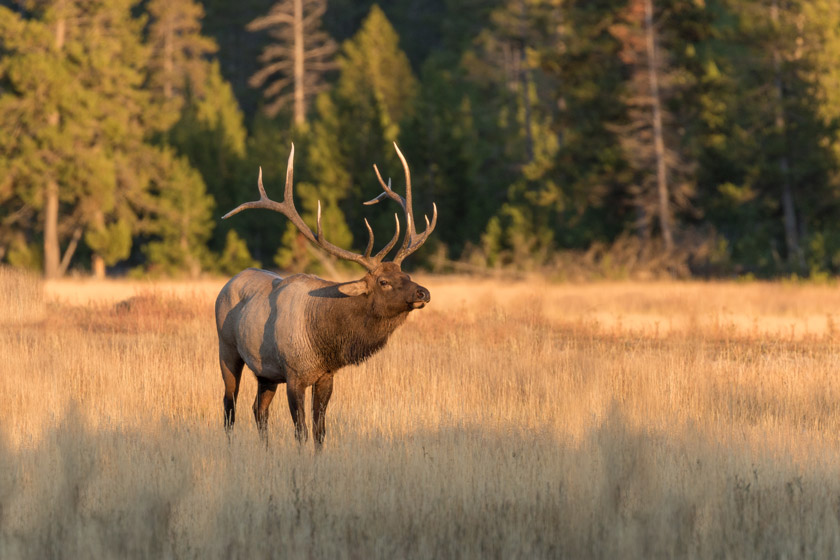
Getty: twildlife
While you can go the DIY route on your elk hunt, most people find success when they hire a guide. Most charge anywhere from $500 to $2,500 to guide during your selected hunt period. The DNR maintains a list of guides and phone numbers on Michigan.gov who specialize in elk. However, we recommend asking around a bit and trying to get reviews from people who have used the guide's services in the past. Some of them are going to be better at scouting, locating, and predicting elk movements than others.
One benefit to hiring a guide is many will usually offer up more hunting opportunities than you would get trying to bag an elk yourself on state land. Some guides may have exclusive access to private grounds. That can make the difference between a stuffed freezer and an unfilled elk tag and a lifetime of regret.
Michigan is one of the most difficult states to draw an elk tag. However, it is also incredibly rewarding to harvest a big bull in state few hunters get the chance to pursue them in. At the very least it is the type of hunt every resident should experience at least once in their lives.
Products featured on Wide Open Spaces are independently selected by our editors. However, when you buy something through our links, we may earn a commission.
For more outdoor content from Travis Smola, be sure to follow him on Twitter and check out his Geocaching and Outdoors with Travis YouTube channels.
